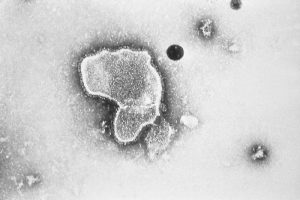By NewsDesk @infectiousdiseasenews
The Centers for Disease Control and Prevention (CDC) issued a health advisory last week due to an increase in respiratory syncytial virus (RSV) activity across parts of the Southern United States.

Due to this increased activity, CDC encourages broader testing for RSV among patients presenting with acute respiratory illness who test negative for SARS-CoV-2, the virus that causes COVID-19. RSV can be associated with severe disease in young children and older adults.
In the United States, RSV infections occur primarily during the fall and winter cold and flu season. In April 2020, RSV activity decreased rapidly, likely due to the adoption of public health measures to reduce the spread of COVID-19.
Compared with previous years, RSV activity remained relatively low from May 2020 to March 2021. However, since late March, CDC has observed an increase in RSV detections reported to the National Respiratory and Enteric Virus Surveillance System (NREVSS), a nationwide passive, laboratory-based surveillance network.
CDC noted increases in laboratory detections and in the percentages of positive detections for both antigen and PCR testing in parts of HHS Region 4 (Alabama, Florida, Georgia, Kentucky, Mississippi, North Carolina, South Carolina, and Tennessee) and Region 6 (Arkansas, Louisiana, New Mexico, Oklahoma, and Texas).
Due to limited testing outside of the typical RSV season, data are limited in some jurisdictions and may be incomplete for the most recent weeks. Since this elevated interseasonal activity is a deviation in the typical circulation patterns for RSV, at this time it is not possible to anticipate the likely spread, peak, or duration of activity with any certainty. Health officials also identified increased interseasonal RSV circulation in parts of Australia during late 2020 and in South Africa in early 2021. Still, RSV did not reach seasonal peak levels in most regions or result in widespread circulation.
Subscribe to Outbreak News TV on YouTube
RSV is primarily spread via respiratory droplets when a person coughs or sneezes, and through direct contact with a contaminated surface.
RSV is the most common cause of bronchiolitis and pneumonia in children under one year of age in the United States. Infants, young children, and older adults with chronic medical conditions are at risk of severe disease from RSV infection.
Each year in the United States, RSV leads to on average approximately 58,000 hospitalizations with 100-500 deaths among children younger than 5 years old and 177,000 hospitalizations with 14,000 deaths among adults aged 65 years or older.
- Colorado: Plague confirmed in Boulder County cat
- Rabid raccoon reported in Cape Cod for 1st time in 8 years
- Diphtheria outbreak in the Dominican Republic prompts CDC travel notice
- New Mexico investigates two suspected cases of wound botulism
- Germany: H1N1v influenza case reported in teen
- Monkeypox in the United Kingdom: WHO provides more details
- Malaysia: 4th human rabies case reported in Sarawak in 2021
- Monkeypox cases reported in Wales
- Saudi Arabia: Taif man is 9th MERS case of 2021
- Monoclonal antibody prevents HIV infection in monkeys, study finds

